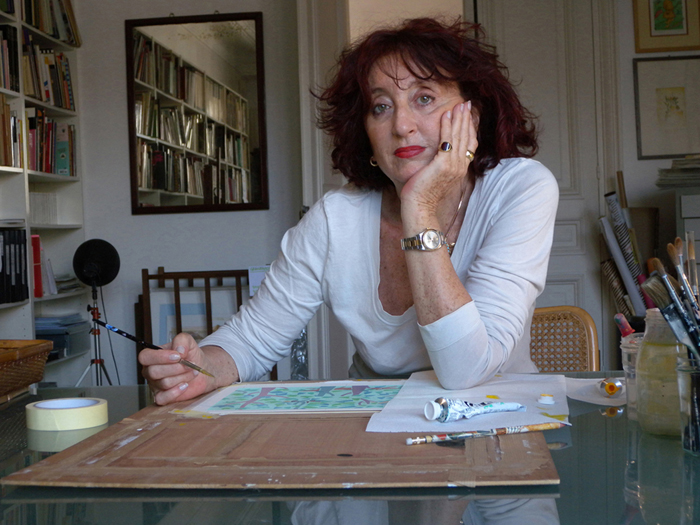I was born in Florence. I have an older sister. My father was a professor at the university and my mother kept house.
Various health problems kept me out of grade school, but I was very happy when I was able to resume my schooling later.
At school, everything interested me – it was my window onto the world. I still distinctly recall the different odors of some of my teachers. Busy as I was observing everything around me, I was often distracted during class, and because of that, I knew I would be in for punishment. As soon as the school bell rang, the three blocks between school and home gave me another opportunity for new discoveries. This also got me a clip on the ear everyday, since I was always late for lunch.
Soon I was nine. I fell in love with a classmate, which made me even more distracted. I remember so well this state of being in love – I felt the same when I saw Gregory Peck on the screen of the Fulgor movie theater where I went with my beloved grandmother. The difference was that Gregory Peck, because he was unreal, made me swoon, something that my grandmother found very touching.
Later, I was absent even more from school since I would stop to draw everything I saw in my notebook: buildings, churches and people. When I was younger, I had played with a set of cards with Florentine buildings and paintings on them, and for me, it was exhilarating to have before my very eyes all these beauties that I had gotten to know with those cards. Was this a premonition of some of my work to come?
So I was a pretty bad student, ignorant of most of the subjects being studied, constantly late, spending my time daydreaming at the top of Giotto's Campanile. Ever resourceful, I sold textbooks to buy myself drawing pencils, paints and paint brushes. And it was definitely during the oral exams that I developed my habit of speaking slowly, which gave me the time to hear the answers being whispered to me by generous classmates. During my last years of high school, I took some painting classes at the Florence Academy of Fine Arts. Unfortunately my parents weren't in favor of this and so I wasn't able to continue with those studies.The few private classes I took were paid for – as always – by selling textbooks.
At that time, I discovered the very first Pop Art paintings in a little museum in Venice called the Guggenheim which really bowled me over!
Was this another premonitory sign of some of my future work?
My years at the Faculty of Architecture were very happy; I was able to draw with India ink and to sculpt, while learning everything else by heart. At that time, I dreamed of becoming a sculptor and at the age of 22, for the first time in my life, I earned money with my work by winning third place in a national sculpture
competition organised by Italian steel giant Dalmine.
After receiving my architecture
diploma, entitled The Imprint of the Feminine on Architecture, I taught drawing to a class of nice kids around Florence. I took them to the countryside, I showed them the flowers and the plants and, frequently I was referee for my students' football games.
I was not successful in my career as an architect because it bored me too much. nor was I successful as a sculptor, because I didn't have the means, nor did I have much success as a teacher. When I was thirty I was led by a lucky star onto what I believe was the right path. I left Florence, architecture and all the rest, immigrating to Milan to try my luck At the time, Milan was a prosperous and bustling place and I had the good fortune to have an extraordinary experience as an illustrator in different fields. I published my first children's book in 1975 and I began to pave my way by publishing other books in Spain, Italy and France. The following years were wonderful and I worked enthusiastically for television (
Il Granracconto), for advertisement and for the press.
In 1990, I left Milan for Paris, something which I had always dreamed of doing. This decision was a very beneficial one. Since then, I have devoted myself exclusively to children's books.
I was fortunate in that my published books were internationally successful – I published seven books in the USA.
The variety of themes and issues has led me more recently to continually renew my work according to my inspiration. Thus in
Le Rythme de la Rue, I used oil paints, in
Connais-tu Igor – immersed as I was in the discovery of Russia – I used acrylics and gouaches and made reference to the language of Russian constructivism, which I still adore. Finally,
La Folle Equipée is a sensitive homage to the latest trend in the history of modern art, New York Pop Art, with serious work on plain colors and allusions to my favorite artists.
To conclude this autobiography, the pleasure of drawing and the feeling of never having been being bored continue to fill my daily life with vivacity and intensity.
Will drawing transport me elsewhere, me with my volatile and fleeting astrological sign, made of air and water?

